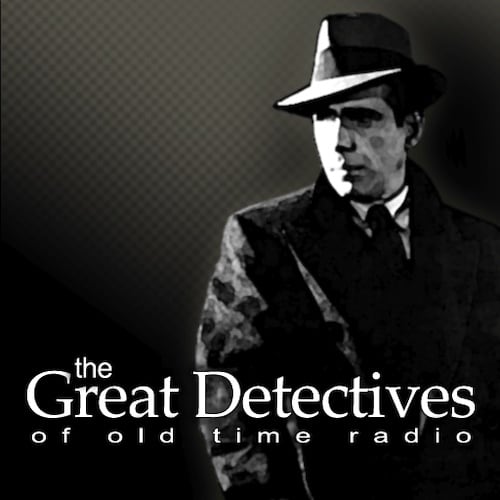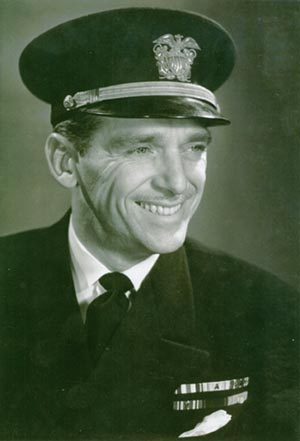On September 30, 1962, Yours Truly Johnny Dollar and Suspense aired their last episodes. This marked the end of the Golden Age of Radio. But what exactly had ended?
Many believe this marked the end of radio drama or audio drama as a whole. In truth, the U.K., South Africa, and many other countries around the world continued to make radio dramas for decades and British have never stopped. Further, thousands of hours of audio drama have also been still produced in the United States. In fact, there hasn’t been a single week since 1962 that at least one audio drama was produced in the United States.
Heartbeat Theater was produced from Hollywood by the Salvation Army. It often recruited mid-level Hollywood characters. It would continue until 1985. The Eternal Light was presented by the Hebrew Theological Seminary. In later years, it often moved towards panel discussions, but they continued to incorporate audio drama as part of their broadcasts off and on into the late 1960s.
In addition, radio drama programs aimed at children, like The Children’s Bible Hour and Your Story Hour continued to produce new material. Pacific Garden Mission in Chicago began broadcasting weekly audio dramas in 1950 and continues to this present day
Radio drama didn’t die, but that doesn’t mean nothing had changed. Two big factors had changed.
The Golden Age of Radio was marked by an embarrassment of riches in talent and glamour. Its top shows featured the best actors, musicians, and writers. It is a level of glamour and talent that radio will never see again. Imagine what a modern-day version of the Lux Radio Theater would be like. The theater would be hosted by Steven Spielberg with musical direction with Danny Elfman providing the music and actors like Tom Hanks, Emma Watson, Cate Blanchett, Robert Downey, Jr, and Dwayne Johnson would perform radio version of their own movies.
This would never happen today. There’s neither money or public interest to justify it. Nor could any radio show draw guest stars at the top of their game and height of their popularity like Suspense and several other dramatic anthology programs.
The people who make modern audio dramas aren’t big stars and have no interest in becoming such. More audio drama in recent decades has come out of places like Boston, Grand Rapids, Colorado Springs, and Seattle than from Hollywood.
The second big change is American radio drama ceased being part of America’s common culture. At the height of the golden age of radio, radio was at the center of American popular culture. It was famous. It had its own legendary unforgettable moments. A generation of Americans can’t hear “Flight of the Bumblebee Bee” without thinking of The Green Hornet. In the popular culture, it was possible to understand references to radio programs in the same way we might understand when a work is referencing The Godfather or Star Wars without ever having seen them.
When I was growing up in the 1980s and 1990s, the most enduring pop culture artifact of the period were the Looney Tunes. Those cartoons contain pop culture references that will go right over your head if you don’t know the Golden Age of Radio. For example, mother animals giving a distinctive shout to absent children of “Henry!” and Daffy Duck’s wife saying, “I want a divorce.” are references to golden-age radio programs.
By contrast, all radio programs released since the end of the Golden Age of Radio are cult entertainment. The continuing fandom for golden age of radio is as well, but that’s always been the case with newer programs. They are loved by their devotees and completely irrelevant to every other living creature on the face of the Earth.
That being the case, it’s reasonable to wonder if the end of the Golden Age of Radio might have occurred earlier. Some cite November 1960 as the end of the golden age of radio, particularly fans of soap operas. Once Gunsmoke was canceled in June 1961, all that remained of the world of network-originated radio drama was an hour of programming featuring TV soap opera actors. I still prefer September 1962, as network radio drama had faded and withered eleven years until then..
Nonetheless, Golden Age radio programming has been kept alive in a number of ways.
Radio Rebroadcasts
Military radio services like the Armed Forces Radio and Television Service and the Far East Network (FEN) continued to replay radio programs from the golden age of radio.
Also, various stations continued to dedicate a portion of their programming to replaying programs from the Golden Age of Radio, some with hosts, and others without hosts. There has been a decline in such radio rebroadcasts in recent years, particularly as radio stations seek to avoid backlash over content that doesn’t meet modern standards and sensibilities.
While it is not quite as common these day, old time radio still is rebroadcast. The longest running of these series is The Big Broadcast which originates in Washington, DC. It was originally hosted by John Hickman (1964-90), and then by radio hall of famer Ed Walker (1950-2015) and has been hosted by 2016 by Pulitzer Prize Winner Murray Hurwitz.
The most widely heard show is When Radio Was, a series syndicated by Radio Spirits. The series began in 1990 and has had numerous hosts including original Jeopardy Host Art Fleming (1990-95), comedian Stan Freberg (1995-2006), and Broadcaster/History Chuck Schaeden (2006-2007). Since 2007 Greg Bell has hosted the daily syndicated series, which also airs on the Radio Classics Satellite radio channel.
Radio Preservation and Conventions:
Most American radio programs aired only once. Much of radio was done live and disappeared into the ether. However, transcription disks were made of many programs. Most of these were intended to be destroyed after they were played. However, there were quite a few disks that survived in radio stations or ended up stored in various locations and were purchased by collectors and preservationists. Tapes were often made from the disks.
Fans of old-time radio began to gather. The Friends of Old Time Radio arose in the 1970s and was followed in the 1980s by The Society to Preserve and Encourage Radio Drama, Variety And Comedy (SPERDVAC). These organizations served gathering places for fans and collectors of golden age radio. In addition to the opportunity to meet surviving cast and crew from the Golden Age of radio, fans traded tapes of programs with other collectors. It is through this process of collectors acquiring and trading radio programs with each other that so many programs survive from the golden age of radio.
Commercial Sellers:
Over the years, many companies have sold commercial radio vinyl records, cassettes, and CDs. They were sold to the general market consumers at stores and record shops. These products gave fans of certain programs or types of programs a chance to listen to programs or types of programs they particularly enjoyed when they wanted to. It was a tricky business to negotiate for a wide variety of reasons, such as figuring out what type of programs people would be nostalgic for enough to buy, as well as finding the right price point for consumers that would allow the company to stay in business. Many companies entered the market but most went defunct.
The Internet:
The Internet has overall been a boon for vintage radio programs. The first old time radio programs posted on the Internet were low-quality and often barely listenable, perhaps due to the limited quality of recordings available to original posters. At the same time, it made it easier for old time radio fans and researchers to regularly connect with one another.
Thanks to advancing audio technology, increased hard drive storage capacity, the proliferation of broadband, and the work of many volunteers, the poorer quality recordings have been replaced with better-sounding episodes. Golden age radio programs are available at hundreds of old-time radio websites and podcasts, as well as on video sites such as YouTube.
Whatever Happened To…
There’s a perception by many that after the Golden Age of Radio, that era’s performers suffered and faced their careers ending. In reality, it’s hard to say for certain about any performer, “If only had radio had remained influential, their life would not have gone downhill.” Maybe one actor comes to mind that you could make that argument.
For most radio actors, working in radio was a blessing. They enjoyed the work and the ability to become anyone. Radio’s light rehearsal schedule and quick turn around allowed them more time with family. Some treasured being able to act before a wide audience but going about in public unrecognized. However, most pressed on with their careers.
Some found their place in TV land. Agnes Moorhead had been the original Margot Lane on The Shadow and starred in one of radio’s most iconic plays, “Sorry, Wrong Number.” To anyone who didn’t know radio, she was simply Endora on Bewitched. Howard McNear had been a versatile character adept at creating mad killers or just plain eccentric oddballs, but was known to many as Floyd the Barber on the Andy Griffith show. Others such as Virginia Gregg, Herb Vigran, and John Dehner had stunningly long careers and a wide variety of character roles.
Others took their voice acting experience into the world of animation. Janet Waldo had played the quintessential teen girl in the 1940s radio series Meet Corliss Archer. In animation, she starred as Judy Jetson, Penelope Pitstop, and Josie from Josie and the Pussycats. Paul Frees created the voice for Disney’s psychologist duck Ludwig Von Drake. and the role of Boris Badenov on The Adventures of Rocky and Bullwinkle. Sometimes, a cartoon would feature multiple stars from Radio’s Golden era, such as the first Fantastic Four cartoon which featured Adventures of Philip Marlowe star Gerald Mohr as Mr. Fantastic and Paul Frees as The Thing.
Many who survived long enough got to attend the first old-time radio conventions, meet the fans who loved their work, and some performed old scripts, putting on their old radio roles like a comfortable pair of shoes.
There were radio actors who moved on to other things but recalled their radio days fondly. They’d gladly get back into radio if given the chance. These sort of actors not only were part of the golden age of radio, but would take part in the prominent efforts to bring back radio drama over the next two decades.

